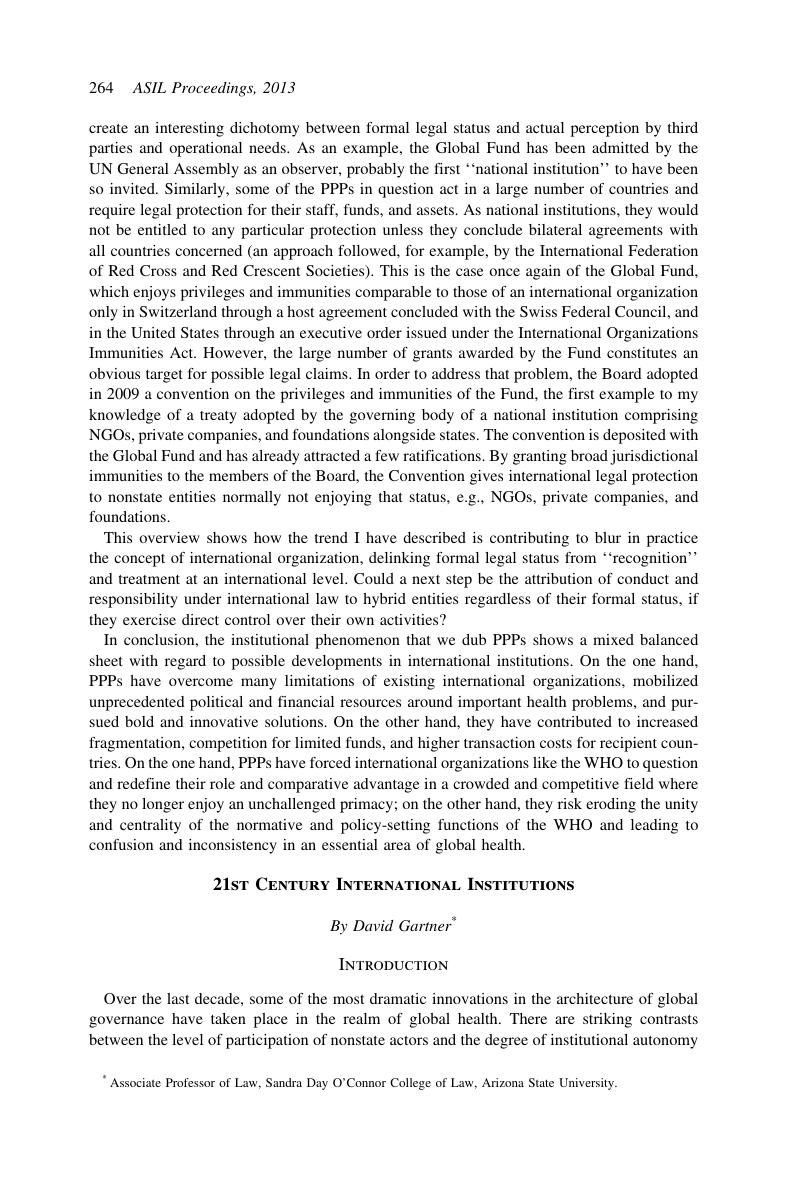Article contents
21st Century International Institutions
Published online by Cambridge University Press: 20 January 2017
Abstract

- Type
- 21st Century International Institutions: Lessons from Global Health Governance?
- Information
- Copyright
- Copyright © American Society of International Law 2014
References
1 See Gartner, David & Kharas, Homi, Scaling Up Impact: Vertical Funds and Innovative Governance, in Getting to Scale: How to Bring Development Solutions to Millions of Poor People (Chandy, Laurence, Hosono, Akio, Kharas, Homi & Linn, Johannes eds., 2013).Google Scholar
2 Institute for Health Metrics and Evaluation, Financing Global Health 2012: The End of a Global Age? (2013).
3 Gartner & Kharas, supra note 1, at 113.
4 Id. at 131.
5 de Sijpe, Nicolas Van, Is Foreign Aid Fungible? Evidence from the Education and the Health Sectors (Oxford University, Centre for the Study of African Economies, Working Paper No. 2010-38)CrossRefGoogle Scholar, available at http://www.csae.ox.ac.uk/workingpapers/pdfs/2010-38text.pdf.
6 Constitution of the World Health Organization, chapter XVI, art. 71.
7 GAVI Board, http://www.gavialliance.org/about/governance/gavi-board/.
8 Global Fund Board, http://www.theglobalfund.org/en/board/constituencies/.
9 Global Fund, Lessons from the Field: A Report Card on the Country Coordinating Mechanism Model (2008).
10 For example, the Clean Technology Fund, the Strategic Climate Fund, and the Global Agriculture and Food Security Program are each formally administered by the World Bank.
11 See Abbott, Kenneth & Gartner, David, Reimagining Participation in International Institutions, J. Int’l L. & Int’l Rel. (2012)Google Scholar.
12 Dare, Lola, Independent Evaluations of the Global Fund, 375 Lancet 1694 (2010)CrossRefGoogle ScholarPubMed.
13 See Gartner & Kharas, supra note 1.
14 Katz, Itamar et. al., Factors Influencing Performance of Global Fund Supported Tuberculosis Grants, Int’l J. Tuberculosis & Lung Disease (2010)Google ScholarPubMed.
- 1
- Cited by


